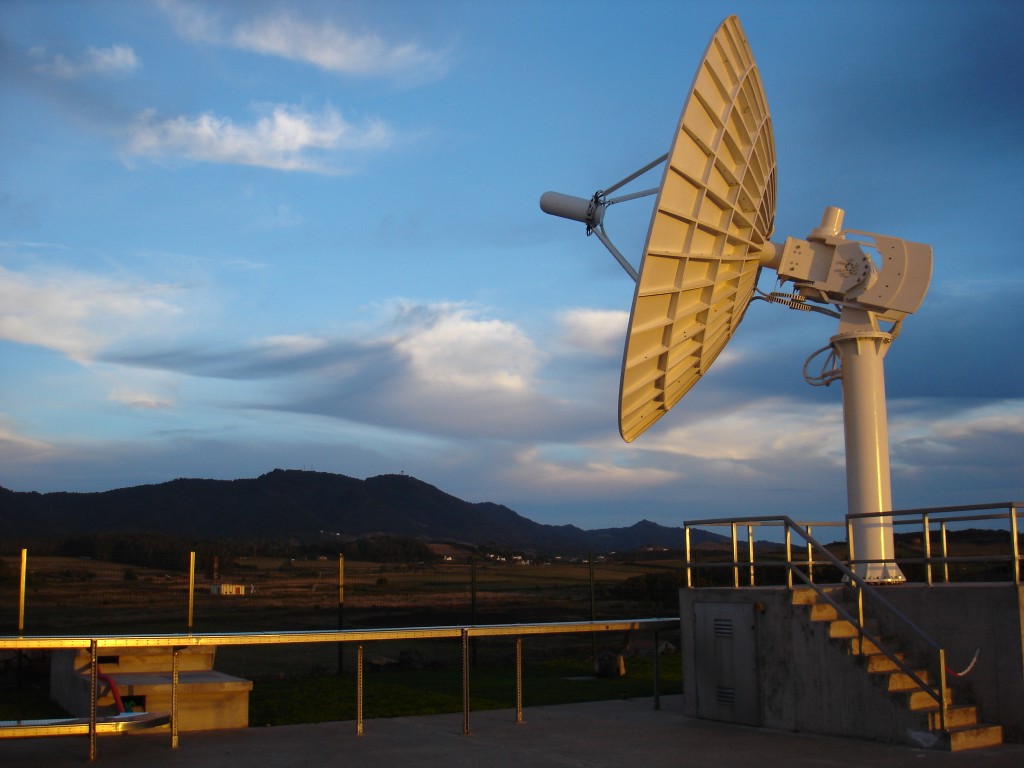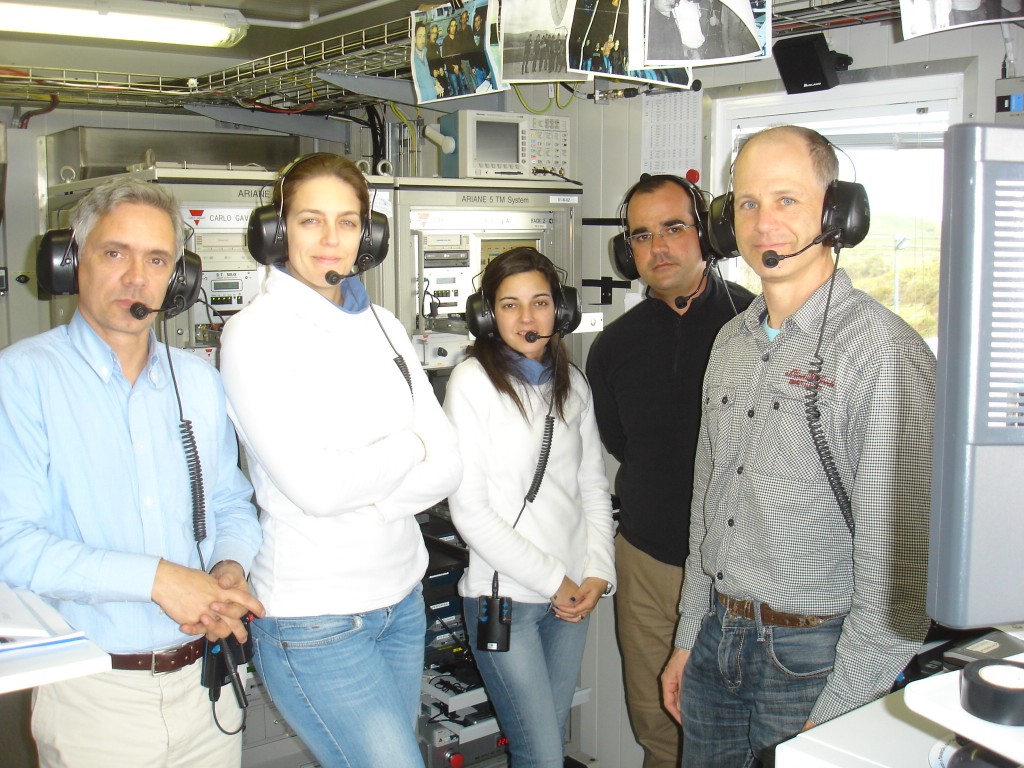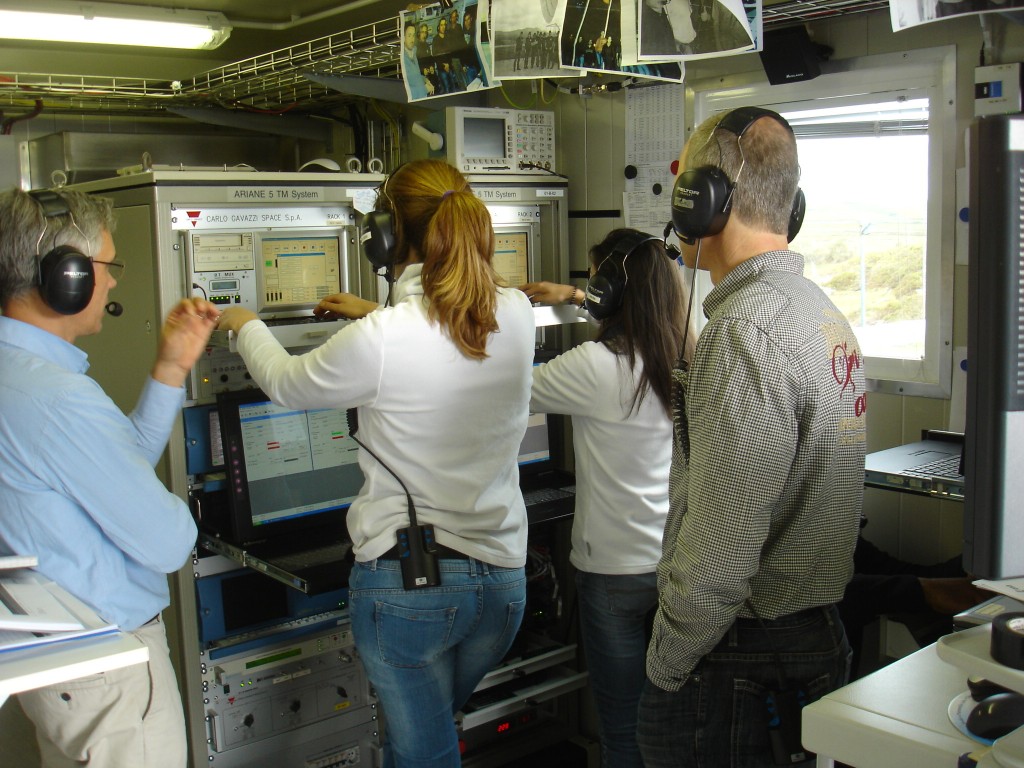Tomorrow, ESA’s tracking station network, Estrack, will support the flight of Arianespace’s Soyuz VS11.
Lift-off is set for 21:46:18 UTC (22:46:18 CET) from Kourou to deliver Europe’s next pair of Galileo satellites into orbit. The flight will last about 3 hrs, 47 min.
Two stations from the Estrack network will track Soyuz (times given in mission elapsed time and all are subject to change):
Santa Maria station (SMA), in the Azores, will track the launcher during its first orbit as it rises above the Atlantic heading West toward Africa. Shortly after separation of the main stage and the Fregat first burn, SMA will acquire signals at 12min:06sec. The contact pass will last just 6 minutes and 50 seconds.
Perth station (PER), in Western Australia, will track Fregat as it continues in orbit during its ballistic (unpowered) phase. Perth will acquire signals at the 46min:23secs into the mission, and will track Fregat through separation of the Galileo satellites expected at 3:47:57 into flight.
The planned timeline is:
AOS SMA: 12min6sec
LOS SMA: 18min56sec
AOS PER: 46min23sec
Separation: 3h47min57sec
LOS PER: 7h0min0sec

Santa Maria station Credit: ESA CC BY-SA IGO 3.0 https://creativecommons.org/licenses/by-sa/3.0/igo/

Gerhard Billig, at right, from ESOC, is joined by the engineering team at Santa Maria station for a full network check on 25 March. Credit: ESA CC BY-SA IGO 3.0 https://creativecommons.org/licenses/by-sa/3.0/igo/

Gerhard Billig, at right, from ESOC, is joined by the engineering team at Santa Maria station for a full network check on 25 March. Credit: ESA CC BY-SA IGO 3.0 https://creativecommons.org/licenses/by-sa/3.0/igo/
Estrack engineers Gerhard Billig and Robert Launer, based at ESOC, Germany, have been at Santa Maria and Perth, respectively, for a number of days now, helping the local engineering support teams test and configure the stations for launcher tracking. The two stations have also taken part in a number of ground segment readiness tests and reviews.
“We’ve been working extended hours to ensure that both Estrack stations are ready to support the Soyuz mission,” said Robert Launer in an email from Australia. “We still have one more network simulation to go through in the morning of 27 March, check the station a few more times and, after that, we’ll be ready.”
It’s interesting to note that data received from Soyuz/Fregat come down at just 32 kbit/s – about the speed of a pokey dial-up modem web modem 15 years ago. But that’s sufficient to receive the crucial telemetry signals, which are then transmitted direct to launcher control at Kourou.
“We’re looking forward to an exciting flight on Friday and will be watching closely when Soyuz flies over, delivering a pair of Galileo sats into space,” says Gerhard.


Discussion: one comment
I’m glad this has not yet been affected by “pro-Ukrainian” sanctions! Why is it possible to cooperate in space but not on earth?